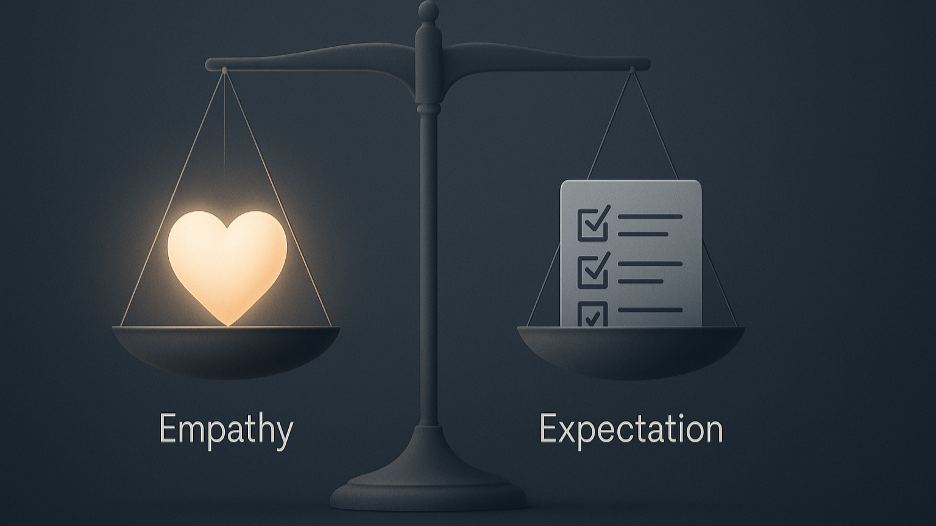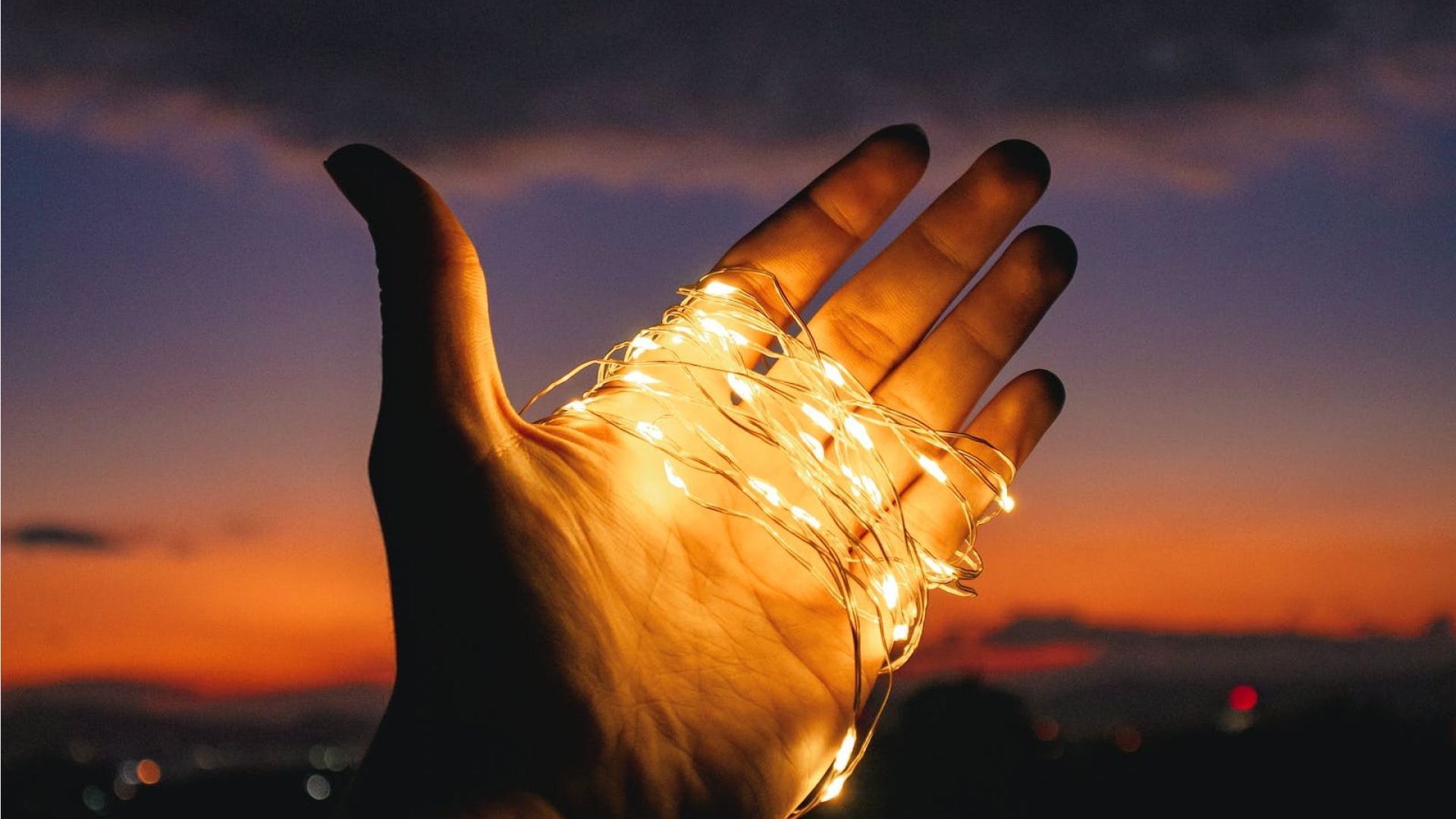Article
The Secret Sauce of Change Agents: Why Some Leaders Thrive on Shaking Things Up
November 5, 2024

In every organization, some leaders don’t just navigate change—they create it. These are the change agents, the individuals who push boundaries, stir the pot, and drive transformation in ways that others wouldn't even imagine. What sets them apart isn't just their skills, but a mindset shaped by unique personality traits and behaviors that propel them to champion change, even when others resist it. Here’s why they stand out, along with real-world examples illustrating their impact.
1. Challenging the Status Quo: The Firestarter’s Mindset Change agents are relentless in questioning the way things are. They don’t settle for “that’s how we’ve always done it.” Instead, they find comfort in discomfort, constantly pushing for better ways. Their assertiveness, visionary outlook, and outspoken nature equip them to confront entrenched practices head-on. Like architects who redraw blueprints when the old designs no longer serve a purpose, these leaders know that progress requires stepping outside the familiar.
Satya Nadella exemplifies this mindset. When he took over at Microsoft, the company was clinging to its aging Windows operating system while falling behind in cloud computing and mobile technology. Nadella challenged the status quo by shifting the company’s focus to cloud services with Azure and embracing subscription-based models like Office 365. He even made the once-unthinkable decision to adopt open-source software and partner with former rivals. This bold shift revitalized Microsoft, bringing it back to the forefront of the tech industry.
Why It Matters: The ability to challenge long-held beliefs is essential for innovation. Without questioning existing processes, organizations risk stagnation. Change agents act as catalysts, enabling teams to rethink their approaches and unlock potential breakthroughs. Their visionary and freethinking attitude doesn’t just seek incremental improvements—it aims for transformations that redefine the game.
2. Encouraging Innovation and Creativity: The Alchemists of the Workplace Effective change agents are workplace alchemists who transform ordinary ideas into game-changing solutions. They create environments where innovation thrives, encouraging risk-taking and experimentation. Their creativity and openness to new experiences mean they naturally seek out diverse perspectives and challenge conventional thinking.
Consider Mary Barra at General Motors. In the traditionally conservative automotive industry, she has led the charge toward electric vehicles (EVs) and autonomous driving technologies. By championing significant investments in EV technology and acquiring Cruise Automation, a self-driving car company, Barra has set GM on a path to a cleaner future. At the same time, she maintains a balanced approach, investing in fuel efficiency and hybrid vehicles to ensure a practical transition.
Why It Matters: In today’s fast-paced world, where entire industries can shift overnight, innovation is crucial. Leaders who foster creativity can pivot quickly in response to market changes, solving complex problems with inventive solutions. Their willingness to experiment is driven by their high openness and inventive spirit, setting them apart from those who cling to what is familiar.
3. Building Credibility and Trust: The Foundation of Change While change agents are known for shaking things up, they understand that change without trust is a recipe for chaos. They build credibility by being reliable and transparent, earning respect through consistent actions and fair treatment of others. It’s not just about saying the right things; it’s about embodying the values they advocate.
Reshma Saujan’s journey with Girls Who Code is a powerful example of building trust and credibility. She founded the organization to address the lack of women in computer science, sharing her personal story to inspire and persuade others. By demonstrating the tangible impact of Girls Who Code programs, Saujani has gained the trust of educators, parents, and policymakers, making her organization a force for change in the tech industry.
Why It Matters: Trust is the currency that allows change to happen. Without it, people are likely to resist new initiatives, no matter how well-planned they are. When change agents build credibility, they not only secure buy-in but also inspire others to follow their lead. Their high social confidence and ability to navigate relationships make them effective at rallying others around a shared vision.
4. Effective Communication and Persuasion: The Storytellers of Transformation Change agents don’t just communicate; they compel. They craft a vision that is not only clear but also deeply compelling, helping others see the need for change in a way that feels urgent and personal. Their communication style is more than just informational—it’s inspirational. They take their audience on a journey from where things are to where they could be.
For them, effective communication isn’t just about giving directions; it’s about motivating others to act. This persuasive power is rooted in their personality traits like assertiveness, social confidence, and strategic thinking. When they speak, people listen—not because they have to, but because they want to.
Why It Matters: Change is unsettling, and people often resist it due to fear of the unknown. Leaders who can communicate effectively help reduce this anxiety, providing a sense of direction that makes the journey less daunting. When change agents speak with clarity and empathy, they create a shared purpose that propels the organization forward.
5. Leading by Example: Walking the Talk Change agents don’t just advocate for transformation; they embody it. They demonstrate the behaviors, values, and attitudes they want to see across the organization, setting the tone from the top. Their high achievement orientation and assertiveness drive them to model excellence, showing others that the standards they set are not only achievable but also necessary.
Picture a trailblazer who doesn’t wait for the path to be cleared—they carve it out themselves. This sends a powerful message to their teams: “If I can do it, so can you.” Their actions reinforce their words, making it easier for others to follow suit.
Why It Matters: Leading by example builds credibility and accelerates the adoption of new practices. It’s one thing to advocate for change; it’s another to live it. When leaders “walk the talk,” they reduce skepticism and create momentum, inspiring others to embrace the transformation.
6. Empowering Others and Building Relationships: The Multipliers of Change Change agents understand that true transformation requires a collective effort. They don’t just delegate tasks; they empower people by involving them in decision-making processes and recognizing their contributions. These leaders build strong relationships across the organization, creating a network of allies who feel personally invested in the change.
They’re like gardeners who don’t just plant seeds—they nurture them, ensuring the conditions for growth are optimal. Their ability to align expectations and foster collaboration is rooted in their high social intelligence and assertiveness, allowing them to navigate complex organizational dynamics.
Why It Matters: Empowering others leads to higher engagement and commitment. When employees feel valued and involved, they are more likely to contribute positively to change efforts. Building strong relationships also helps to overcome resistance by unifying different groups around common goals.
7. Strategic Thinking and Visionary Orientation: The Big Picture Thinkers Change agents aren’t just focused on immediate challenges; they have a long-term vision for the future. Their strategic thinking enables them to assess risks and opportunities, using data and insights to guide their actions. They balance bold initiatives with practical considerations, ensuring changes are not only ambitious but also achievable.
Their visionary nature drives them to look beyond what is directly in front of them, always considering the broader implications. They are not just reacting to changes in their environment; they are actively shaping the future.
Why It Matters: A clear vision provides direction and helps people understand the larger purpose behind change. Strategic thinking ensures that transformation efforts are not only aligned with long-term goals but also adaptable to unforeseen shifts, increasing the likelihood of sustainable success.
8. Resilience and Adaptability: The Survivors and Thrivers Setbacks are inevitable in any change effort, but effective change agents are characterized by their resilience and adaptability. They embrace uncertainty and view challenges as opportunities for growth rather than reasons to retreat. Their optimism keeps them pushing forward even when circumstances get tough, while their endurance ensures they don’t lose sight of the ultimate goal.
Think of them as bamboo, bending in the wind without breaking. Their ability to adapt to changing conditions is driven by their openness and risk-taking mindset, enabling them to pivot when necessary without compromising the end goal.
Why It Matters: Resilience is essential for navigating the complexities of change. Leaders who can adapt to evolving circumstances keep their teams on track and ensure that change efforts remain relevant, no matter what obstacles arise.
9. Creating a Sense of Urgency and Momentum: The Catalysts for Action Change agents understand that without urgency, even the best initiatives can lose steam. They create a sense of urgency to overcome inertia and complacency, often by highlighting metrics, market trends, or competitive pressures that show why immediate action is necessary.
Their approach is like lighting a fire under the organization, motivating everyone to move quickly. They generate short-term wins to build momentum, keeping the focus on long-term goals while making the change feel both urgent and achievable.
Why It Matters: Creating a sense of urgency helps to mobilize the organization. Short-term wins provide proof that progress is being made, encouraging continued effort and commitment to the transformation.
10. Balancing Innovation with Practicality: The Realists with Big Dreams While change agents are advocates for bold ideas, they also understand the importance of practicality. They know when to push for radical changes and when to take incremental steps. Their approach is not just about dreaming big but about executing in a way that ensures sustainability.
They are like tightrope walkers balancing bold innovation with careful steps, ensuring that resources are used effectively. This ability to combine strategic thinking with inventive problem-solving ensures that their ideas don’t just disrupt but also endure.
Why It Matters: Balancing innovation with practicality ensures changes are not only groundbreaking but also feasible and sustainable. This approach prevents burnout and resistance while still promoting progress. These leaders, whether revitalizing a tech giant, transforming a traditional industry, or closing societal gaps, embody the essence of change agents. They challenge, inspire, and lead in ways that transform companies and entire industries, proving what’s possible when you refuse to settle for the status quo. Their distinct personality traits—assertiveness, social intelligence, resilience, and openness—are not just drivers of behavior but the very essence of what makes them effective in turning vision into reality.
1. Challenging the Status Quo: The Firestarter’s Mindset Change agents are relentless in questioning the way things are. They don’t settle for “that’s how we’ve always done it.” Instead, they find comfort in discomfort, constantly pushing for better ways. Their assertiveness, visionary outlook, and outspoken nature equip them to confront entrenched practices head-on. Like architects who redraw blueprints when the old designs no longer serve a purpose, these leaders know that progress requires stepping outside the familiar.
Satya Nadella exemplifies this mindset. When he took over at Microsoft, the company was clinging to its aging Windows operating system while falling behind in cloud computing and mobile technology. Nadella challenged the status quo by shifting the company’s focus to cloud services with Azure and embracing subscription-based models like Office 365. He even made the once-unthinkable decision to adopt open-source software and partner with former rivals. This bold shift revitalized Microsoft, bringing it back to the forefront of the tech industry.
Why It Matters: The ability to challenge long-held beliefs is essential for innovation. Without questioning existing processes, organizations risk stagnation. Change agents act as catalysts, enabling teams to rethink their approaches and unlock potential breakthroughs. Their visionary and freethinking attitude doesn’t just seek incremental improvements—it aims for transformations that redefine the game.
2. Encouraging Innovation and Creativity: The Alchemists of the Workplace Effective change agents are workplace alchemists who transform ordinary ideas into game-changing solutions. They create environments where innovation thrives, encouraging risk-taking and experimentation. Their creativity and openness to new experiences mean they naturally seek out diverse perspectives and challenge conventional thinking.
Consider Mary Barra at General Motors. In the traditionally conservative automotive industry, she has led the charge toward electric vehicles (EVs) and autonomous driving technologies. By championing significant investments in EV technology and acquiring Cruise Automation, a self-driving car company, Barra has set GM on a path to a cleaner future. At the same time, she maintains a balanced approach, investing in fuel efficiency and hybrid vehicles to ensure a practical transition.
Why It Matters: In today’s fast-paced world, where entire industries can shift overnight, innovation is crucial. Leaders who foster creativity can pivot quickly in response to market changes, solving complex problems with inventive solutions. Their willingness to experiment is driven by their high openness and inventive spirit, setting them apart from those who cling to what is familiar.
3. Building Credibility and Trust: The Foundation of Change While change agents are known for shaking things up, they understand that change without trust is a recipe for chaos. They build credibility by being reliable and transparent, earning respect through consistent actions and fair treatment of others. It’s not just about saying the right things; it’s about embodying the values they advocate.
Reshma Saujan’s journey with Girls Who Code is a powerful example of building trust and credibility. She founded the organization to address the lack of women in computer science, sharing her personal story to inspire and persuade others. By demonstrating the tangible impact of Girls Who Code programs, Saujani has gained the trust of educators, parents, and policymakers, making her organization a force for change in the tech industry.
Why It Matters: Trust is the currency that allows change to happen. Without it, people are likely to resist new initiatives, no matter how well-planned they are. When change agents build credibility, they not only secure buy-in but also inspire others to follow their lead. Their high social confidence and ability to navigate relationships make them effective at rallying others around a shared vision.
4. Effective Communication and Persuasion: The Storytellers of Transformation Change agents don’t just communicate; they compel. They craft a vision that is not only clear but also deeply compelling, helping others see the need for change in a way that feels urgent and personal. Their communication style is more than just informational—it’s inspirational. They take their audience on a journey from where things are to where they could be.
For them, effective communication isn’t just about giving directions; it’s about motivating others to act. This persuasive power is rooted in their personality traits like assertiveness, social confidence, and strategic thinking. When they speak, people listen—not because they have to, but because they want to.
Why It Matters: Change is unsettling, and people often resist it due to fear of the unknown. Leaders who can communicate effectively help reduce this anxiety, providing a sense of direction that makes the journey less daunting. When change agents speak with clarity and empathy, they create a shared purpose that propels the organization forward.
5. Leading by Example: Walking the Talk Change agents don’t just advocate for transformation; they embody it. They demonstrate the behaviors, values, and attitudes they want to see across the organization, setting the tone from the top. Their high achievement orientation and assertiveness drive them to model excellence, showing others that the standards they set are not only achievable but also necessary.
Picture a trailblazer who doesn’t wait for the path to be cleared—they carve it out themselves. This sends a powerful message to their teams: “If I can do it, so can you.” Their actions reinforce their words, making it easier for others to follow suit.
Why It Matters: Leading by example builds credibility and accelerates the adoption of new practices. It’s one thing to advocate for change; it’s another to live it. When leaders “walk the talk,” they reduce skepticism and create momentum, inspiring others to embrace the transformation.
6. Empowering Others and Building Relationships: The Multipliers of Change Change agents understand that true transformation requires a collective effort. They don’t just delegate tasks; they empower people by involving them in decision-making processes and recognizing their contributions. These leaders build strong relationships across the organization, creating a network of allies who feel personally invested in the change.
They’re like gardeners who don’t just plant seeds—they nurture them, ensuring the conditions for growth are optimal. Their ability to align expectations and foster collaboration is rooted in their high social intelligence and assertiveness, allowing them to navigate complex organizational dynamics.
Why It Matters: Empowering others leads to higher engagement and commitment. When employees feel valued and involved, they are more likely to contribute positively to change efforts. Building strong relationships also helps to overcome resistance by unifying different groups around common goals.
7. Strategic Thinking and Visionary Orientation: The Big Picture Thinkers Change agents aren’t just focused on immediate challenges; they have a long-term vision for the future. Their strategic thinking enables them to assess risks and opportunities, using data and insights to guide their actions. They balance bold initiatives with practical considerations, ensuring changes are not only ambitious but also achievable.
Their visionary nature drives them to look beyond what is directly in front of them, always considering the broader implications. They are not just reacting to changes in their environment; they are actively shaping the future.
Why It Matters: A clear vision provides direction and helps people understand the larger purpose behind change. Strategic thinking ensures that transformation efforts are not only aligned with long-term goals but also adaptable to unforeseen shifts, increasing the likelihood of sustainable success.
8. Resilience and Adaptability: The Survivors and Thrivers Setbacks are inevitable in any change effort, but effective change agents are characterized by their resilience and adaptability. They embrace uncertainty and view challenges as opportunities for growth rather than reasons to retreat. Their optimism keeps them pushing forward even when circumstances get tough, while their endurance ensures they don’t lose sight of the ultimate goal.
Think of them as bamboo, bending in the wind without breaking. Their ability to adapt to changing conditions is driven by their openness and risk-taking mindset, enabling them to pivot when necessary without compromising the end goal.
Why It Matters: Resilience is essential for navigating the complexities of change. Leaders who can adapt to evolving circumstances keep their teams on track and ensure that change efforts remain relevant, no matter what obstacles arise.
9. Creating a Sense of Urgency and Momentum: The Catalysts for Action Change agents understand that without urgency, even the best initiatives can lose steam. They create a sense of urgency to overcome inertia and complacency, often by highlighting metrics, market trends, or competitive pressures that show why immediate action is necessary.
Their approach is like lighting a fire under the organization, motivating everyone to move quickly. They generate short-term wins to build momentum, keeping the focus on long-term goals while making the change feel both urgent and achievable.
Why It Matters: Creating a sense of urgency helps to mobilize the organization. Short-term wins provide proof that progress is being made, encouraging continued effort and commitment to the transformation.
10. Balancing Innovation with Practicality: The Realists with Big Dreams While change agents are advocates for bold ideas, they also understand the importance of practicality. They know when to push for radical changes and when to take incremental steps. Their approach is not just about dreaming big but about executing in a way that ensures sustainability.
They are like tightrope walkers balancing bold innovation with careful steps, ensuring that resources are used effectively. This ability to combine strategic thinking with inventive problem-solving ensures that their ideas don’t just disrupt but also endure.
Why It Matters: Balancing innovation with practicality ensures changes are not only groundbreaking but also feasible and sustainable. This approach prevents burnout and resistance while still promoting progress. These leaders, whether revitalizing a tech giant, transforming a traditional industry, or closing societal gaps, embody the essence of change agents. They challenge, inspire, and lead in ways that transform companies and entire industries, proving what’s possible when you refuse to settle for the status quo. Their distinct personality traits—assertiveness, social intelligence, resilience, and openness—are not just drivers of behavior but the very essence of what makes them effective in turning vision into reality.
share this
Related Articles
Related Articles

The Nicest Boss in the World He was adored. He remembered birthdays, checked in on people’s families, and stayed late helping fix slides no one asked him to touch. His team called him “the best boss we’ve ever had.” He was also running on fumes. Behind the warm smile was a leader quietly burning out — drowning in everyone else’s problems, too empathetic for his own good. If you’re a leader who prides yourself on caring deeply, this might sting a little: empathy, taken too far, becomes control in disguise. Empathy’s Secret Shadow Empathy is essential for leadership. It builds loyalty, safety, and trust. But the same trait that makes people feel seen can also make them dependent. When you can’t tolerate someone else’s discomfort, you start protecting them from it. You step in to fix, to soothe, to rescue. It looks noble. It feels generous. But it quietly steals agency — theirs and yours. Your team stops growing because you’re doing their emotional labor. You stop leading because you’re managing feelings instead of outcomes. That’s the hidden cost of care. The Emotional Guilt Loop Over-empathetic leaders live in a constant tug-of-war between compassion and guilt. They think: “They’re already stretched — I can’t pile more on.” “If I push harder, I’ll seem uncaring.” “I’ll just do it myself; it’s easier.” Sound familiar? That’s not empathy anymore. That’s guilt masquerading as kindness. And guilt makes terrible business decisions. Because guilt doesn’t guide you toward what’s right. It just steers you away from what feels uncomfortable. A Founder’s Story One founder I coached, let’s call her Lina, led with heart. She built her company around “people first.” And she meant it. But somewhere along the way, “people first” turned into “me last.” She couldn’t say no. She kept saving underperformers, approving vacations during crunch time, rewriting others’ work to spare them stress. Her team adored her — until they didn’t. Because beneath her helpfulness was quiet resentment. And resentment always leaks. The breakthrough came when she realized something simple but hard: “I was protecting people from learning the hard parts of growth.” That’s when she started leading again instead of parenting. When Caring Becomes Control Here’s the paradox: the more you care, the more you risk over-controlling. You jump in to fix not because you don’t trust them, but because you feel for them. It’s empathy turned inward — I can’t stand watching them struggle. But leadership isn’t about eliminating discomfort. It’s about using it wisely. People grow by stretching, not by being spared. When you save someone from every failure, you’re also saving them from competence. The Biology of Burnout Chronic empathy triggers chronic stress. When you absorb other people’s emotions all day, your nervous system never gets a break. You start mirroring everyone’s anxiety like an emotional amplifier. Your brain thinks you’re in crisis — even when you’re not. That’s why over-caring leaders are often the first to burn out. Their compassion becomes constant cortisol. The irony? The leaders who want to create safety for others end up unsafe themselves. How to Care Without Carrying Feel, then filter. It’s okay to feel someone’s frustration. Just don’t keep it. Ask: “Is this mine to hold?” Help through accountability. Say, “I know this is tough, and I also need you to take ownership.” The and matters. Let discomfort be developmental. When a team member struggles, resist rescuing. Stay present, not protective. Coach before you comfort. Instead of “Don’t worry,” try, “What do you think your next move is?” Reframe empathy as empowerment. Caring isn’t about absorbing pain; it’s about believing people can handle it. Funny but True One exec I worked with told me, “Every time I stop helping, I feel like a jerk.” I said, “No — you feel like a leader. It just takes a while to tell the difference.” He laughed and said, “So… you’re telling me leadership feels bad at first?” I said, “Exactly. Growth always does.” The Cultural Ripple Effect When leaders overfunction, teams underfunction. When leaders hold space instead of taking space, teams rise. Empathy should expand others, not consume you. The healthiest cultures balance care and candor — support and stretch. They normalize struggle as part of the process instead of something to be hidden or rescued. That’s what real compassion looks like in motion. The Maturity of Tough Empathy Empathy without boundaries is exhaustion. Empathy with boundaries is wisdom. The mature version of empathy doesn’t say, “I’ll protect you.” It says, “I believe you can handle this — and I’ll walk beside you while you do.” That’s not cold. That’s developmental. Your Challenge This Week Notice where you’re rescuing someone instead of coaching them. Pause before you step in. Ask yourself, Am I helping because they need it — or because I need to feel helpful? Then take one small risk: let them handle it. They’ll probably surprise you. And you’ll feel lighter than you have in months. Final Word Caring is beautiful. It’s what makes you human. But unchecked empathy turns leaders into emotional pack mules — carrying what was never theirs to bear. Real leadership is still full of heart. It just remembers that compassion without accountability isn’t love. It’s fear. And the moment you stop rescuing everyone, you finally start freeing them — and yourself.s)

The Smart Leader’s Blind Spot It’s strange how often the smartest people make the worst decisions under pressure. They don’t lose IQ. They lose perspective. I’ve seen this happen more times than I can count. A sharp, decisive executive starts second-guessing every move. They overanalyze, overwork, and overcontrol — all in the name of being “thorough.” They think they’re being rational. But underneath the spreadsheets and meetings is something far less logical. It’s fear. The Fear That Doesn’t Look Like Fear We think of fear as panic — sweating, shaking, obvious. But most leadership fear hides behind competence. It shows up as perfectionism, busyness, overcommitment, indecision. It sounds like, “Let’s get more data.” “Let’s not rush this.” “Let’s keep this one close.” That’s not analysis. That’s avoidance with a better vocabulary. When fear runs the show, the goal subtly shifts from making the right decision to avoiding the wrong one. And those two things are worlds apart. The Cost of Fear-Based Leadership When leaders operate from fear, everything tightens. They stop listening. They rush to defend. They play small when the company needs boldness. They keep people who are loyal over people who are competent — because loyalty feels safer. And here’s the real tragedy: the team starts copying the fear. They become cautious, compliant, quiet. Pretty soon, no one’s leading anymore. They’re all managing risk — mostly emotional risk. A CEO’s Moment of Truth One CEO I coached — brilliant, confident, deeply human — was terrified of being wrong in front of his board. He masked it well. On the outside: decisive. Inside: a constant hum of anxiety. After a tough quarter, he admitted, “I realized half my decisions weren’t based on strategy — they were based on protecting my image.” That moment of honesty was the start of his maturity curve. Once he could name the fear, it stopped running his show. He didn’t become fearless. He became aware. And awareness is what turns reaction into wisdom. Why Fear Feels Safer Than Clarity Fear has a strange way of convincing us it’s caution. Caution whispers, “Slow down and look.” Fear screams, “Don’t move.” The first sharpens judgment. The second paralyzes it. And the more we listen to fear, the more it disguises itself as prudence. That’s why emotional maturity isn’t about suppressing fear. It’s about being able to say, “Ah, that’s fear talking — not fact.” How Fear Distorts the Mind Here’s what happens when fear hijacks leadership: Tunnel vision: You fixate on the immediate threat and forget the big picture. Confirmation bias: You start looking for data that validates your anxiety. Short-termism: You make safe decisions that feel good now and cause pain later. Blame shifting: You protect your ego by pushing ownership outward. The mind gets smaller. The leader gets reactive. The company gets stuck. The Maturity Shift Emotional maturity isn’t about being unshakable. It’s about staying curious in the presence of fear. Mature leaders don’t pretend they’re fearless. They just don’t let fear make the decisions. They pause, breathe, and ask, “What part of this is data, and what part is my insecurity talking?” That single question can change everything. A Founder’s Story A founder I worked with once said, “I’m not afraid — I just have high standards.” But as we unpacked it, he realized those “high standards” were actually a way to control outcomes. He feared disappointment — his own and others’. When he finally stopped trying to protect his reputation and started protecting his clarity, his decisions got faster and cleaner. The business didn’t just grow — it started breathing again. Because when you stop trying to look right, you finally have room to be right. Funny, But True I once asked a CEO what he’d do differently if he weren’t afraid of failing. He said, “Probably the same things I’m doing now — just with less Advil.” That’s the thing: most leaders already know what to do. Fear just makes it hurt more. How to Lead Without Fear (Even When It’s There) Name it early. The sooner you recognize fear, the less power it has. Ask yourself, “What’s the story fear’s telling me right now?” Reframe mistakes as tuition. You’ll still pay for errors — might as well learn something from them. Separate identity from outcome. A bad decision doesn’t mean a bad leader. It means a leader who’s still learning — like everyone else. Keep one truth-teller nearby. Someone who loves you enough to tell you when you’re acting from ego. Practice micro-bravery. Tell one hard truth a day. Say “I don’t know” once a week. Let discomfort become strength training. The Paradox of Fear Fear doesn’t make you weak. It means you care. But if you never face it, it becomes your compass — and it always points backward. Courage, maturity, clarity — they’re not opposites of fear. They’re what happen when you stop running from it. Your Challenge This Week Next time you feel that knot in your stomach — before a board meeting, a tough conversation, a high-stakes call — pause. Ask yourself: What am I afraid might happen? Then ask: What might happen if I act from clarity instead of fear? That’s not therapy. That’s leadership hygiene. Final Word The mark of maturity isn’t fearlessness. It’s self-awareness. You can’t control your fear. But you can choose whether it sits in the driver’s seat or the passenger’s. Great leaders don’t wait for fear to disappear. They lead with it beside them — quietly, respectfully — but never in charge.

The Charisma Illusion Charisma gets all the press. It fills conference rooms, wins funding rounds, and dominates the LinkedIn highlight reel. We treat it like the gold standard of leadership — as if volume equals vision. But charisma is a sugar high. It spikes energy, then crashes trust. Composure, on the other hand — quiet, grounded, centered composure — is the kind of influence that lasts. It doesn’t light up a room; it settles one. When things go sideways, it’s not the charismatic leader people look for. It’s the calm one. The Crisis Test Picture this. The product just failed. The client’s furious. Your team’s pacing like trapped cats. Two leaders walk in. One storms into action — loud, fast, “What the hell happened here?” The other walks in slowly, looks around, and says, “Okay, let’s breathe. What do we know so far?” The first one gets attention. The second one gets results. That’s emotional geometry — the calmest person in the room reshapes everyone else’s state. Why Calm Is the Real Power When you stay composed, you’re not just managing your emotions — you’re regulating the entire system. Here’s the neuroscience behind it: people mirror the nervous system of whoever has the most authority. If you’re grounded, they sync to your rhythm. If you’re frantic, they sync to that instead. You don’t need to lecture anyone on resilience. You just have to model it. It’s not charisma that makes people trust you; it’s the quiet sense that you’re not going to lose your mind when things get hard. Charisma’s Half-Life Charisma is a spark. It can ignite a team — but if there’s no composure beneath it, the whole thing burns out. You’ve seen this movie before: the leader who rallies everyone with a passionate all-hands speech, then disappears into reaction mode when things get messy. Charisma without composure is like caffeine without sleep. You’re awake, but you’re not steady. Composure doesn’t get the applause. It gets the loyalty. A Founder’s Story One founder I worked with — I’ll call him David — was known for being a “high-voltage” guy. He could pitch an investor, fire up a crowd, or talk anyone into anything. But his team? They were walking on eggshells. His energy filled every room, but it left no oxygen for anyone else. During one session, I asked, “When you raise your voice, what happens to theirs?” He went quiet. That was the moment he understood that his passion — the thing he was most proud of — had become the team’s anxiety. A year later, his team described him differently: “He’s still intense, but steady. We trust him more now.” He didn’t lose charisma; he layered it with composure. The Calm Before the Influence Here’s what composure actually looks like: You listen longer. Because real influence starts with attention, not argument. You breathe before reacting. That pause isn’t weakness; it’s power management. You let silence do the work. Charisma fills every space; composure creates space for others to step in. You own your tone. You realize your sighs, your speed, your face — they’re all communication tools whether you intend them or not. You choose steadiness over certainty. People don’t need you to know everything. They just need to know you’re okay not knowing. Funny But True A client once told me, “When I’m calm in a meeting, people assume I’m hiding something.” I said, “Good. Let them wonder.” That’s how unfamiliar calm has become. In some cultures, composure looks radical — even suspicious. But it’s exactly what people crave in a world that never shuts up. Why Charisma Is Easier (and More Addictive) Charisma gets feedback. You see the energy rise, you feel the applause. It’s visible. Composure feels invisible — until you lose it. No one thanks you for staying calm during a crisis. But they remember it when deciding whether to follow you into the next one. That’s why maturity in leadership means getting comfortable with the quiet wins — the meeting that didn’t spiral, the argument that didn’t happen, the team that stayed focused because you did. The Emotional Geometry in Practice Think of composure as geometry because emotions move through space. When you enter a room, you alter its emotional shape. If you radiate calm, people’s shoulders drop. Their thinking widens. They start contributing. If you radiate stress, the room contracts. People shrink. Ideas vanish. Influence isn’t what you say. It’s the energy field you create. Your Challenge This Week Before your next high-stakes meeting, pause outside the door. Take one deep breath and ask yourself: What energy does this room need from me right now? Then bring only that. Nothing more. You’ll be amazed how fast everything slows down when you do. Final Word Charisma captures attention. Composure builds trust. One is about how loudly you shine; the other is about how steadily you glow. The leader who can stay centered when everyone else is spinning doesn’t just have influence — they are the influence. And that’s the kind of power that never burns out.
STAY UP TO DATE
GET PATH'S LATEST
Receive bi-weekly updates from the church, and get a heads up on upcoming events.
Contact Us








